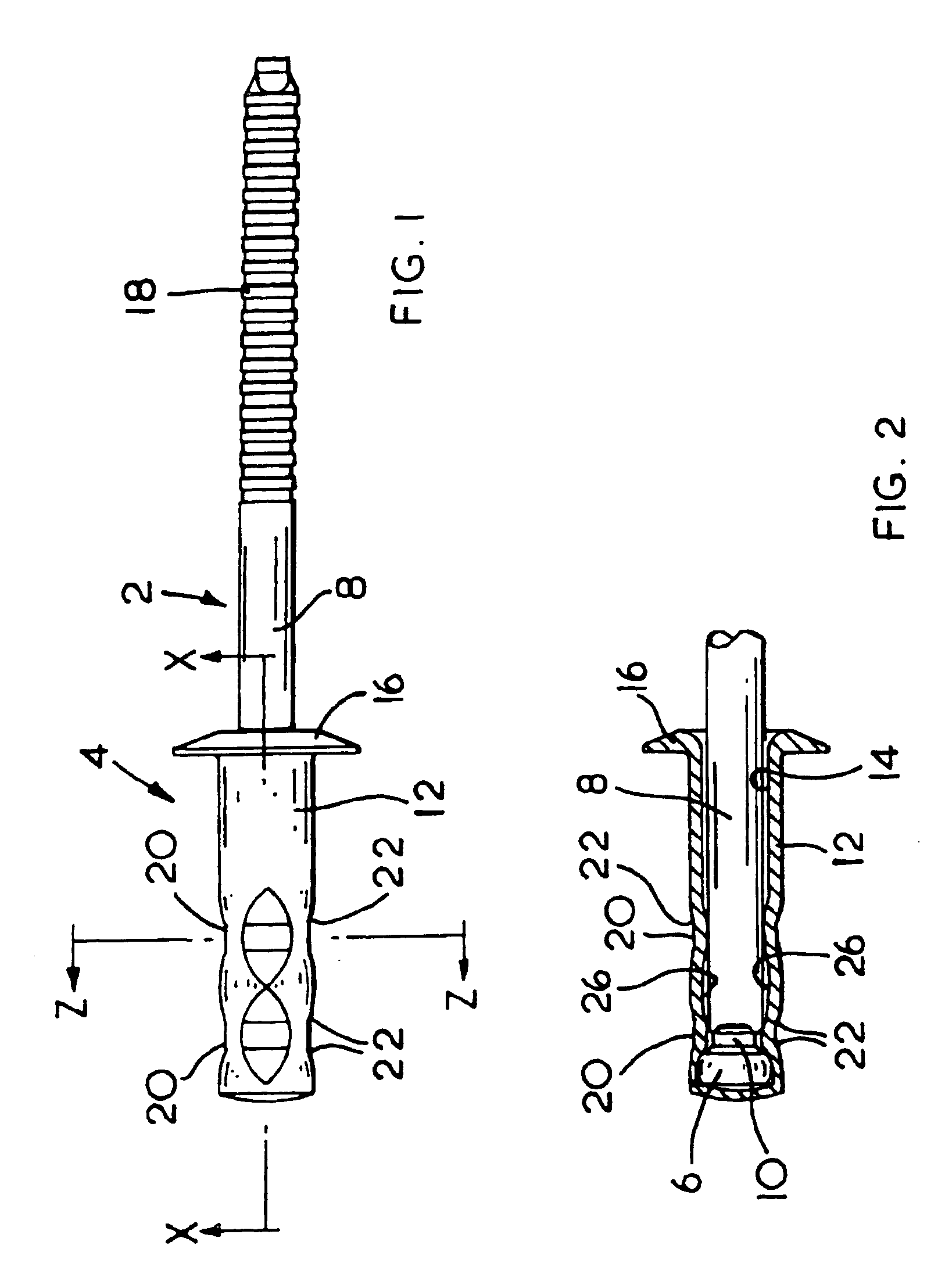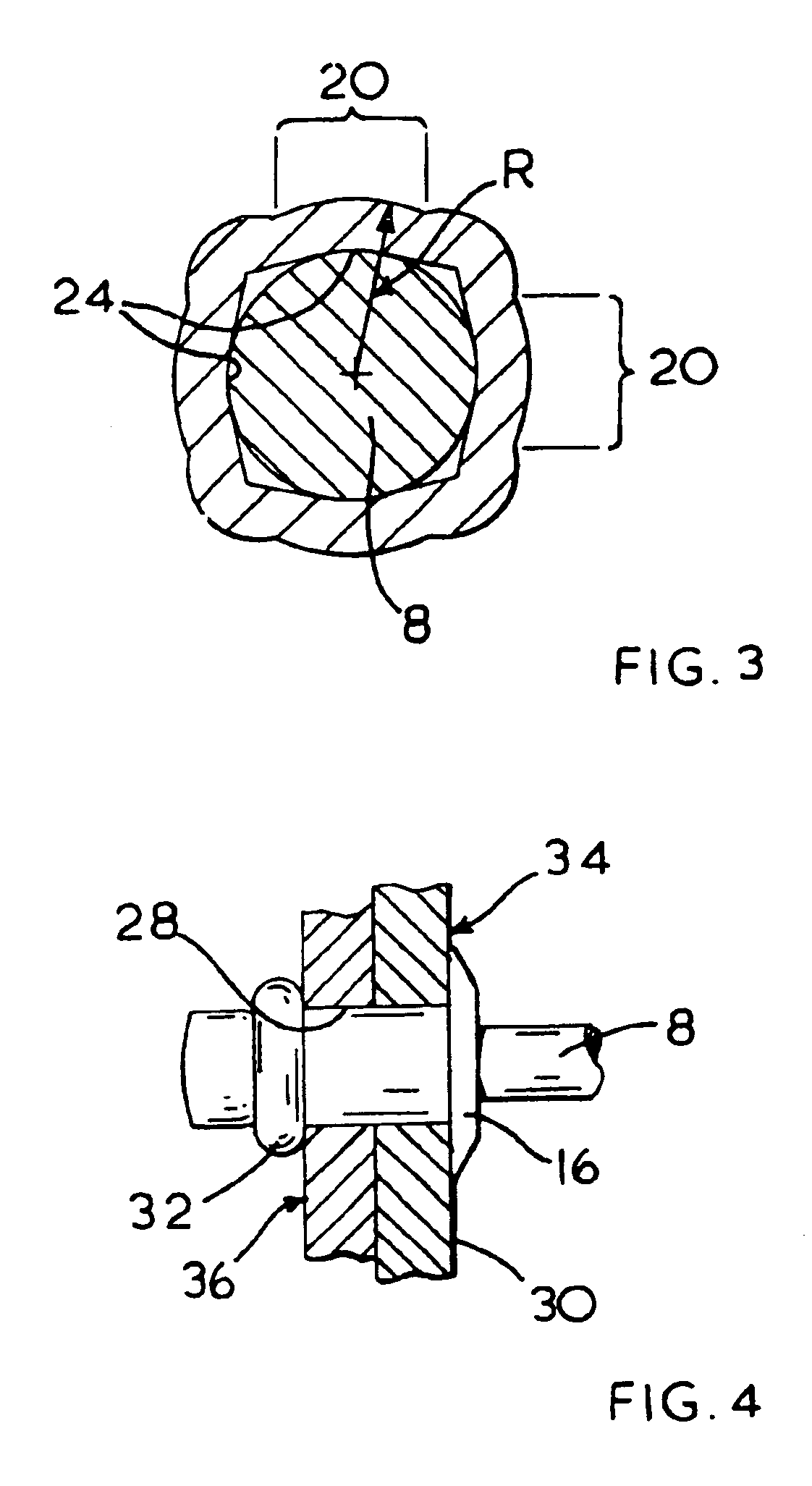Closed-end blind rivet with a crimped shank and method of manufacture thereof
a closed-end, shank technology, applied in the field of blind rivets, can solve the problems of mandrel head fracture, difficult manufacturing, and insufficient resistance of grooves to prevent mandrel heads, and achieve the effects of convenient production, reduced manufacturing cost, and improved manufacturing tolerances
- Summary
- Abstract
- Description
- Claims
- Application Information
AI Technical Summary
Benefits of technology
Problems solved by technology
Method used
Image
Examples
Embodiment Construction
With reference to the accompanying drawings, FIG. 1 shows a blind rivet having a mandrel (2) and a rivet body (4). The mandrel (2) has a mandrel head (6) attached to one end of a stem (8). The stem (8) comprises a breakneck (10) located adjacent the mandrel head (6). The diameter of the stem (8) is substantially uniform along the length of the stem (8).
The rivet body (4) has a tubular shank (12) having a flange (16) formed at one end of the shank (12). A bore (14), shown in FIG. 2, extends through the flange (16) and through a substantial part of the length of the shank (12). The head (6) of the mandrel (2) is located within the shank (12), the outer diameter of the head (6) being larger than the bore (14). The stem (8) of the mandrel (2) extends from the head (6) through the bore (14) and extends from the body (4) of the rivet away from the flange (16). Ridges (18), shown only in FIG. 1, are formed on part of the exposed end of the stem (8) to assist the rivet setting tool in gripp...
PUM
 Login to View More
Login to View More Abstract
Description
Claims
Application Information
 Login to View More
Login to View More - R&D
- Intellectual Property
- Life Sciences
- Materials
- Tech Scout
- Unparalleled Data Quality
- Higher Quality Content
- 60% Fewer Hallucinations
Browse by: Latest US Patents, China's latest patents, Technical Efficacy Thesaurus, Application Domain, Technology Topic, Popular Technical Reports.
© 2025 PatSnap. All rights reserved.Legal|Privacy policy|Modern Slavery Act Transparency Statement|Sitemap|About US| Contact US: help@patsnap.com



